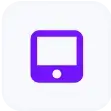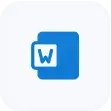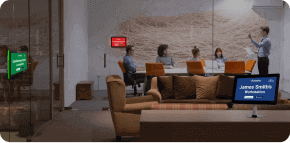Blog

Why A Conference Room Booking App Matters in the Office
Meetings between colleagues, shareholders, clients, and partners are regular parts of business operations. As a result, closed meeting areas play a crucial role in workplace functions.
That said, conference room management can come with a few challenges. Ensuring adequate space for employees often takes plenty of coordination and communication between users across different departments.
The good news is that managing conference rooms doesn’t have to be particularly difficult. In this article, we’ll take a look at what conference booking is. We’ll also look at the best ways to use a conference room booking app to maximize efficiency.
What is Conference Room Booking?
In a nutshell, conference booking is all about the process of booking conference or meeting rooms.
With commercial office space becoming more expensive, facility managers need to look into optimizing whatever space is available. Space is an asset, and unused rooms or sections of the office are underutilized company resources at best.
Conference booking needs to be as simple as possible to accommodate large numbers of employees. When done well, it has the following benefits:
1. Tracking real-time room use and availability
Employees spending less time to secure a room or a workstation are more effective in completing tasks on time.
A conference room booking app takes care of the otherwise tedious processes of reserving and updating meeting rooms. Additionally, with the said app, employees can also invite other team members for essential meetings easily.
2. Planning for current and future needs
With features like real-time data and analytics in the workplace, managers can track when and how employees use spaces. These can give managers a better idea of how to reorganize office layouts, especially when scaling up production.
How Do You Manage Meeting Room Bookings?
Good conference room management is about ensuring employees use workspaces as intended. Tools like boardroom software help in making this possible, but the strategies and insights that inform decision-making are key.
Like other facilities in the office, these spaces intended for accommodating large groups need adequate oversight. Facility managers and admin staff need to be able to coordinate seamlessly to ensure adequate space is provided and properly utilized.
Here are a few tips worth keeping in mind for effective conference room management this 2024:
1. Establish minimum to maximum occupancy levels.
Different rooms have different occupancy levels, which is crucial for ensuring that occupants can work effectively within the allotted space. Facility managers often have to determine these levels by keeping the number of employees in mind.
A conference room booking app is essential for establishing these occupancy levels. This tool can assist facility managers in accomplishing the following:
- Spacing – Ensuring adequate spaces for different teams when needed
- Optimization – Min-max occupancy levels provide insight on the best user-to-space ratio for optimal productivity
2. Stick to a centralized meeting room booking system.
A centralized system should not rely on separate Excel sheets or pen-and-paper ledgers. Conference room scheduling tools are must-haves in the modern office, especially for agile ones.
Centralized reservation tools can operate in real time, especially when making changes to events scheduled in advance. A room booking app should make the experience simple and uniform for all users, regardless of their department.
2. Delegate spaces whenever they are needed.
Large businesses will often have larger facilities with several different core units. As a result, space turns into a more important commodity.
One way to delegate spaces is by assigning conference rooms based on specific tasks. For example, certain spaces may be reserved for sales meetings and visitor meetings. Meanwhile, performance reviews are reserved for another.
3. Set policies for meeting room and conference room reservations.
Every meeting room must have a purpose, and policies should balance flexibility and structure. For facility managers, clear guidelines are defined through effective communication and feedback.
This extends to, and should be reinforced by, the use of tools like room management software. By laying out these policies, managers can ensure that employees have equal access to office facilities.
Here are a few steps to keep in mind when creating an effective policy:
- Assessment – Assess and understand the needs of different teams and departments that will be using said meeting rooms
- Determine different room types – Differentiate meeting rooms based on size, functionality, and available equipment.
- Time limits and allocation rules – Set fair allocation rules and establish a straightforward process for reserving meeting rooms among different teams
- Regular review – Evaluate the policy’s effectiveness at regular intervals and adapt it to fit employees’ needs.
How Do You Set Up a Conference Room?
Conference rooms have changed within the past few decades. A functional meeting room setup is no longer outdated, with countless tangled cords running across the floor.
Setting up a modern conference room is easy with the right tools, such as a conference room booking app. All you need to do is follow these steps:
1. Set up clear rules for use.
Establishing clear policies and guidelines for use is always the first step in setting up a conference room. These kinds of policies are made for managing reservations, use, and conduct within these shared spaces.
That said, it’s worth noting that there are a few challenges to creating an effective meeting room policy, such as eliminating back-and-forth communication.
2. Have the right equipment.
Conference and meeting rooms should have adequate equipment, especially when teams are using them for presentations or conference calls.
For example, projectors, additional monitors, and telephones should be in every meeting room. Manual writing materials like whiteboards and markers should also be present.
That said, not all pieces of equipment will be in every meeting room. Users can also take advantage of room management software to reserve said equipment. Reservations can also extend to items like computers or printers.
1. Make your conference room as accessible as possible.
Conference rooms are more than just places for work. They are also places for collaboration and brainstorming, especially when it comes to project planning or negotiations.
That said, because of the significant space investment, managers should also make them as accessible as possible. Here are a few ways to make your conference rooms easily accessible for the employees who need it:
- Make all meeting room facilities the same – Meeting rooms should have the same tools and equipment kept in the same condition to ensure a streamlined standard procedure.
- Name conference rooms for easier wayfinding – Naming conference rooms on boardroom software will make wayfinding and reservation easier for employees.
- Integrate occupancy sensors – Another way to optimize space usage is by adding occupancy sensors to ensure real-time data is always available.
- Integrate a cleaning schedule – Health and safety should be a given priority, especially for offices with no assigned workstations and plenty of foot traffic.
2. Invest in room management software.
Guidelines, policies, and onboarding can only go so far without a centralised tool to keep them all together. A conference room management tool is perhaps a facility manager’s most important tool.
While it seems simple, this tool is powerful in addressing issues like double booking, idle rooms, and even unnecessary one-person meetings. It can help streamline tedious reservation processes for both admin staff and end users.
What Kind of Conference Room Booking App Should You Use?
It’s worth keeping in mind that not all tools are created equal. However, with many conference room reservation tools available on the market, it can be hard to choose the right one.
Be sure to keep the following in mind when choosing a meeting room booking tool for your office:
#1. Ease of use
All tools should be as easy to use as possible, and conference room booking tools are no exception.
A seamless experience ensures that onboarding will take as little as possible for employees to learn how to use. On top of that, an intuitive user interface will make it easier for the entire office to adopt this new tool.
#2. Real-time Data and Analytics
Real-time data, analytics, and other performance metrics are essential data for making informed decisions. Having a conference room booking tool that keeps track of these can make for a more effective and efficient workplace.
#3. Messaging App Integrations
Employees often have to balance different tools when doing their daily tasks or when completing different projects. Adding another tool can easily take time away from high-priority or time-sensitive tasks.
An ideal conference room booking app should integrate easily with calendar apps like Google or Outlook. Additionally, integration with tools like
#4. Feedback System
Feedback is vital data that facility managers shouldn’t overlook. An effective conference reservation tool with a working feedback management system lets managers know of any system leaks or outages.
The Bottom Line
The nature of the modern office has changed drastically and will continue to change in the next few years. Office space is more expensive, and employees’ needs are changing, prompting facility managers to stay ahead of the curve. Creating a truly agile office becomes possible with the right combination of effective policies and tools, like a room booking app.















































 Support
Support  Demo
Demo  Blog
Blog